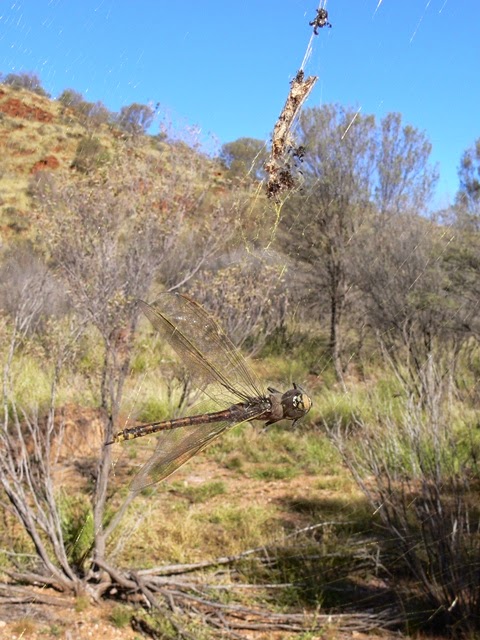Tarago is a small village in the Southern Tablelands of New South Wales. At the time of the last census (2011) it had a population of 351 - and falling.
It has a beautiful little railway station.
 |
| Tarago railway station has an 84 metre platform, with a dock at the down end of the station and a stock siding at the up end. |
Tarago is on the Goulburn - Braidwood Road. I've never traveled between Goulburn and Braidwood, in either direction. But it is also on an alternative route I sometimes take to the coast, which goes from Canberra, through Bungendore and Tarago before heading across to Oallen Ford, Nerriga and Sassafras and finally heading down the escarpment to Nowra. When passing through Tarago I've often thought I should stop and have a look at the railway station - I like old railway stations for some reason (see an earlier post on derelict Girilambone railway station in outback NSW). A week or so ago I finally got my chance.
The Tarago railway station is in great condition, and has recently been meticulously repainted. It looks stunning. It seems to be shut up most of the time, but there are still three TrainLink Explorer services operating daily between Sydney and Canberra which pass through Tarago.
The station was first opened on 3 January 1884 and was the terminus of the line before it was pushed through to Bungendore 14 months later. Tarago has two other old buildings of note: St Josephs Catholic Church, and the Loaded Dog Hotel which dates from 1848. Lunch and lager at the latter was the real reason we were in Tarago on this occasion.
The area around Tarago was already occupied by the Ngunnawal people, and well known to other tribes which traversed the area to the coast or the Monaro during bogong moth season, when the first European explorers came to the area.
Surveyor General James Meehan, with a then young and relatively inexperienced Hamilton Hume as a junior member of the team, was leading part of an 1818 expedition commissioned by Governor Macquarie, when they discovered the nearby Lake Bathurst, an ephemeral lake that at the time happened to be full, with abundant birdlife and lush grasslands. Prospects seemed good and the area was settled during the 1820s, initially at a station called Waterloo Plains, followed by the establishment of two small villages, Lake Bathurst and Tarago.
In fact the present tiny village of Lake Bathurst, 7 kilometres north of Tarago, was the original Tarago, and the current village of Tarago was initially known as Sherwin's Flats. One story has it that there was a mix up of names when the railway line came through: "Apparently, when the maps of a new railway line were being transcribed, the two village names were inadvertently reversed, By the time the mistake was realized, the drafts had already been sent to England for printing and returned. A local railway Inspector decided it was more prudent to change the village names, than to reprint all the maps." *
The name Tarago is thought to mean 'country', or possibly 'a place between two bodies of water' in the Ngunnawal language (the other body of water being Lake George, about 20 kilometres to the west). Lake Bathurst, named by Meehan in 1819, and the village, are both named after Earl Bathurst who, at the time, was the British Secretary of State of War and the Colonies.
Apart from Sherwin's Flats, Tarago has also been known as Tarago Heights, and the Loaded Dog was previously called the Lake Bathurst Hotel. In its heyday, Tarago was quite a busy centre:
"The main street in the village, over its 170 year history has, at various times boasted two produce stores; several bakeries, the Cobb & Co stables; a general store; a Post Office (1883); a 22 room hotel, started and run by J.J.Hush; a lolly/ice cream shop; a butchery and a garage. We also have had the Lake Bathurst Hotel (now the Loaded Dog Hotel), and the railway station and loading dock for the wool trade of the local area." *
A couple of interesting web sites are worth visiting: -
http://www.argylecounty.com.au/towns/lakebathurst.html and
* http://www.loadeddoghotel.com/
The former gives a detailed account of the European settlement of the area and of the current village of Lake Bathurst, the latter includes a great account of the bush ranger history of the area and the significance of the Loaded Dog Hotel.
So if you are passing through Tarago, I can recommend a brief stop for a beer or a meal and a quick poke around.
And as this is meant to be a naturalist's blog, let me finish by saying that on the afternoon these photos were taken there were three Common Starlings, a couple of House Sparrows and a Welcome Swallow hanging around the otherwise deserted railway station...



























.jpg)
